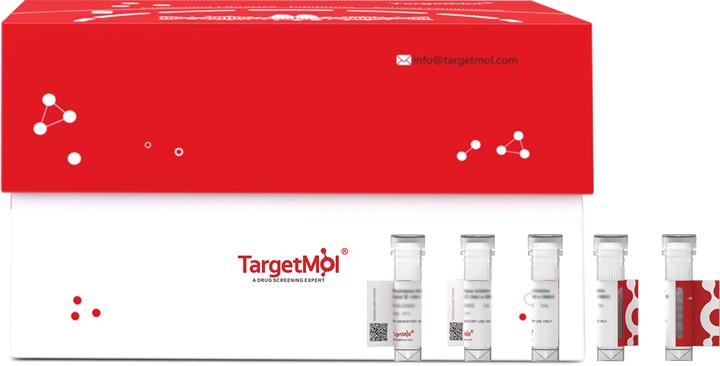购物车
全部删除  您的购物车当前为空
您的购物车当前为空
PDGF-BB Protein, Rat, Recombinant is expressed in E. coli. The accession number is Q05028.

| 规格 | 价格 | 库存 | 数量 |
|---|---|---|---|
| 5 μg | ¥ 656 | 现货 | |
| 10 μg | ¥ 1,080 | 现货 | |
| 20 μg | ¥ 1,590 | 3日内发货 | |
| 50 μg | ¥ 2,700 | 现货 | |
| 100 μg | ¥ 4,350 | 5日内发货 | |
| 200 μg | ¥ 6,890 | 5日内发货 | |
| 500 μg | ¥ 13,300 | 5日内发货 | |
| 1 mg | ¥ 21,600 | 5日内发货 |
| 生物活性 | ED 50 < 2.0 ng/ml, measured by a cell proliferation assay using 3T3 Cells, corresponding to a specific activity of > 5.0 × 10 5 units/mg. |
| 产品描述 | PDGF-BB Protein, Rat, Recombinant is expressed in E. coli. The accession number is Q05028. |
| 种属 | Rat |
| 表达系统 | E. coli |
| 标签 | Tag Free |
| 蛋白编号 | Q05028 |
| 别名 | SSV,SIS,platelet derived growth factor subunit B,PDGFBB,PDGF-2,PDGF2,IBGC5,c-sis |
| 蛋白构建 | Ser74-Thr182 |
| 蛋白纯度 | > 95% as determined by SDS-PAGE |
| 分子量 | ~24.6 kDa (Non-reducing conditions) |
| 内毒素 | < 0.2 EU/μg of protein as determined by the LAL method. |
| 缓冲液 | Lyophilized after extensive dialysis against 20 mM acetic acid. |
| 复溶方法 | It is recommended that this vial be briefly centrifuged prior to opening to bring the contents to the bottom. Reconstitute the lyophilized powder in 20 mM acetic acid up to 100 μg/ml. |
| 存储 | Upon receiving, this product remains stable for up to 6 months at lower than -70°C. Upon reconstitution, the product should be stable for up to 1 week at 4°C or up to 3 months at -20°C. For long term storage it is recommended that a carrier protein (example 0.1% BSA) be added. Avoid repeated freeze-thaw cycles. |
| 运输方式 | In general, Lyophilized powders are shipping with blue ice. Solutions are shipping with dry ice. |
| 研究背景 | Platelet-Derived Growth Factor-BB (PDGF-BB) is one of five dimers (PDGF-AA, AB, BB, CC, and DD) formed by 4 different PDGF subunits. In vivo, PDGF-BB is mainly produced in heart and placenta, and predominantly expressed by osteoblasts, fibroblasts, smooth muscle cells, and glial cells. An inactive precursor of PDGF-BB is produced in the endoplasmic reticulum and then activated by a proprotein convertase after secretion. PDGF-BB functions in a paracrine manner and promotes organogenesis, human skeletal development, and wound healing. PDGF-BB also promotes angiogenesis, particularly in the presence of Fibroblast Growth Factor basic. Therefore, PDGF-BB and its related pathways are potential pharmacological targets. |